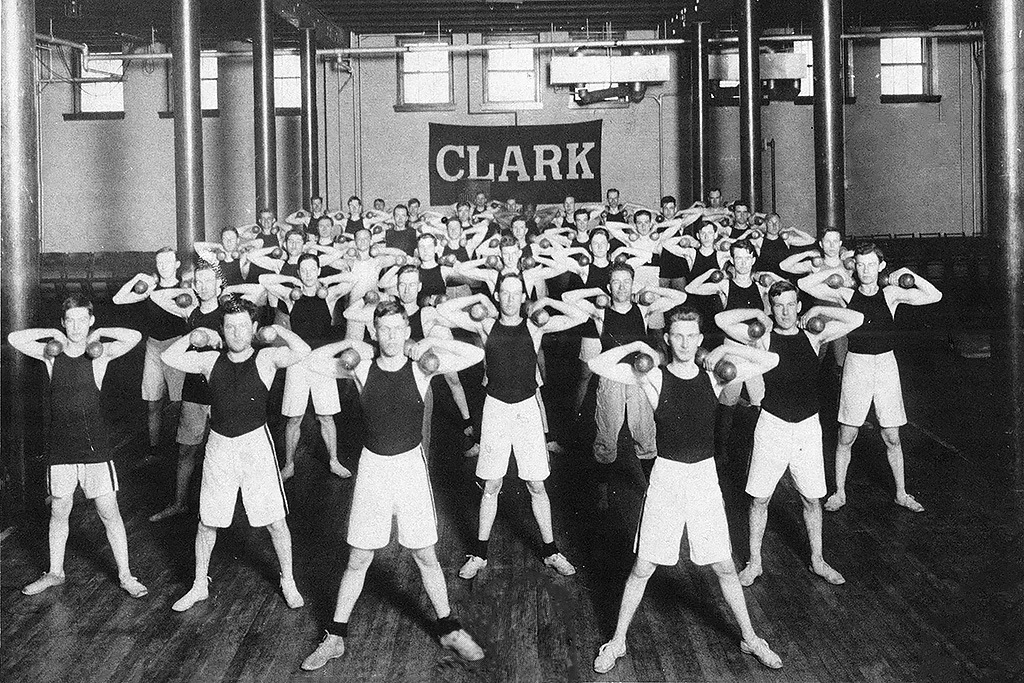
Physical education was a required course for all Clark University undergraduate students from 1910 to 1967.
Learn more in these excerpts from the history of the University published by former Clark archivist William Koelsch.
“After 1910, as the college became more traditional in its emphases, physical education became required of all students. …
“Of course the life of the student in any age and place is not all study. At Clark, however, the policy from the beginning was that extracurricular activities must contribute to or at least not detract from the academic program. There would be instruction in “hygiene, physical culture and athletics,” but there would be no intercollegiate sports. As President [Carroll] Wright put it in the Preliminary Announcement, “While opportunity will be give for athletic sports, they should in all respects be non-competitive in their character and non-commercial in their aims.” … The prohibition against intercollegiate athletic competition was relaxed in 1919, but intercollegiate football remained (and remains) prohibited….
“The sound body in which the sound mind was to be contained was not neglected, however. A qualified physician conducted physical examinations twice a year, and students advised on that basis the forms of exercise that might be individually beneficial for them. Pursuant to Jonas Clark’s request, a large gymnasium had been created in the basement of the Main Building, equipped with apparatus and lockers, and supervised by a gymnasium director. Tennis courts were constructed adjacent to the campus, and athletic contests and interclass games of football, basketball, and baseball were features of the seasonal calendar. Ernest Whitman began a 44-year term as director of all physical education and recreational activity in 1904, ensuring that President Wright’s wish that there be no separate class of athletes within the general student body would be maintained.
…
“Intercollegiate athletic competition was permitted after 1919 in soccer, basketball, baseball, and tennis, as it was to be for other sports later on, except, of course, for intercollegiate football. The athletic teams were supervised by part-time, non-resident coaches until 1936, when a full-time coach was added to the physical education staff.
“Athletic facilities were expanded, in 1923–24 by an athletic field about three blocks from campus, by a field house erected in 1929, and by the construction of the Alumni Gymnasium in 1937–38, with a seating capacity of 800 and facilities for both athletic and social occasions. Thanks in part to Clark’s having a home facility for the first time (previously it had rented a high school gymnasium), basketball had a particularly successful period in the late 1930s and early 1940s.
…
“In 1967, the university instituted new undergraduate course requirements which considerably increased student freedom of choice. … The only specific requirement remaining for the B.A. degree was one in physical education, and when students pointed out that anomaly, the faculty abolished this as well.”
Koelsch, William A. Clark University: 1887–1987, A Narrative History. Clark University Press, 1987.


